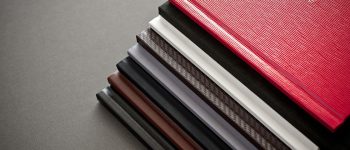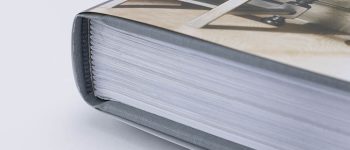Hardcover – Casewrapped.
CaseWRAP
Hardcover books come in two flavors; Casewrapped and Casebound. The difference has to do with the material that covers the outside of the book.
Instead of using traditional book cloth or leather, Casewrapped books are hardcover books that use a printed sheet of paper adhered to the case (cover).
Casewrapping is a great option when you want the visual impact of a paperback book with the stoic resilience of a hardcover book. In fact, this is the primary reason that case wrapping is chosen.
Although book cloth is a more durable material, we film laminate all of our casewrap covers to bake in the durability that our customers require. Lamination has the added benefit of visual appeal and is offered with gloss, satin or softouch finishes.
We find that most hardcover children’s books and cookbooks use case wrapping. There is no rule about this though as either paper or book cloth can be used for any category of hardback book.

Cover Materials
With casewrapped books we will print your design on our commercial presses and in most case apply a thin film laminate for protection.
Your basic choices for lamination include gloss, satin and softouch which is satin with a velvet feel.
Although we are taught not to judge a book by its cover, you still have to grab the readers attention to make a sale.
With this in mind, foil stamping is a popular option. Combined with color printing, foil stamping can elevate the look of your cover.

BUILDING THE CASE
A hardcover book is assembled from three primary components; the case, the bookblock and the endsheets.
The bookblock is essentially a perfect bound book. Check out our Softcover page for more information on this process.
To build the case, three pieces of dense cardboard are used to reinforce the spine and the front and back covers. These are glued to the book cloth in a precise pattern to allow for thickness, overhang and hinge areas. The book cloth is then rolled over the edge and glued to the backside of the case making it ready for final assembly.

Casing-In
Casing-in is the final process in hardcover book assembly. This step marries the case with the bookblock using endsheets.
Endsheets are made of a durable paper and are generally non-printed although printed endsheets are an option.
These sheets are trimmed and folded to match the size of the book block. They are glued to the inside of the case and to the edge of the spine on the bookblock.
The entire book is then clamped and pressed until the glue sets. Once set the book is ready to accept foil stamping and an optional dust jacket.

